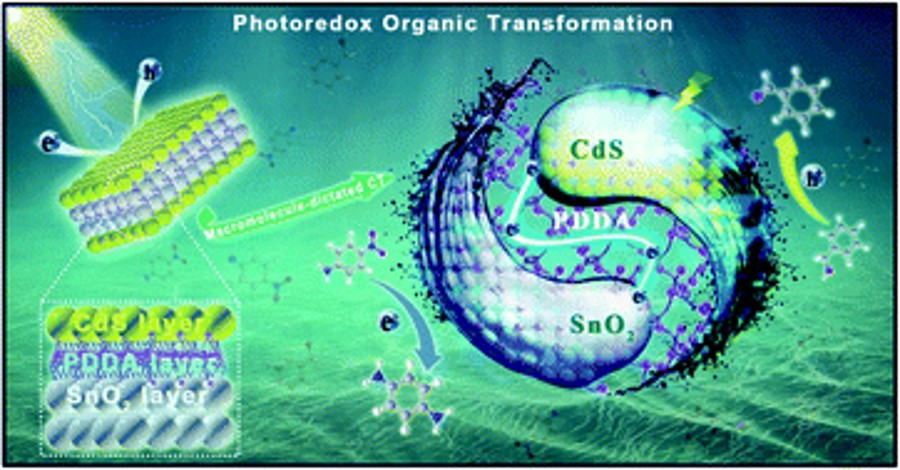Prof. Fang-Xing Xiao Group’s work entitled “Modulating Charge Migration in Photoredox Organic Transformation via Exquisite Interface Engineering” has been published by J. Mater. Chem. A. The work would open up new frontiers to exploit diverse photosystems and provide first insight into fine tuning of charge transport utilizing non-conductive ionic polymers for solar energy conversion.
Modulating photo-induced charge separation/transfer constitutes a central challenge in heterogeneous photocatalysis. Despite the advancement, finely tuning directional electrons migration without involving conventional co-catalysts [e.g., metal nanocrystals and transition metal dichalcogenides (TMDs)] for boosted photoredox catalysis has not yet been explored. Herein, we report the exquisite design of a novel and general macromolecule-modulated photoredox selective organic transformation system, wherein ultrathin macromolecule of poly(diallyl dimethylammonium chloride) (PDDA) layer was integrated at the interface of wide-band-gap (WBG) and narrow-band-gap (NBG) semiconductors for constructing heterostructured photocatalysts. The ultra-thin PDDA interim layer expedites the interfacial unidirectional electron transfer from NBG to WBG semiconductors, constituting the cascade electron transfer channel. The favorable energy level alignment among the building blocks, intimate interfacial integration and multilayered nanoarchitecture endow WBG@PDDA@NBG heterostructures with substantially enhanced and versatile photoredox performances toward selective oxidation of aromatic alcohols to aldehydes and anaerobic reduction of nitroaromatics to amino compounds under visible light irradiation. This is ascribed to the crucial role of ultrathin intermediate PDDA layer as highly efficient metal and TMDs-free charge transfer mediator, relaying the electrons from NBG to WBG semiconductors and retarding the charge recombination. Our work would open up new frontiers to exploit diverse metal and TMDs-free photocatalytic systems and provide first insight into fine tuning of charge transport utilizing non-conductive ionic polymers for solar energy conversion.


Link:
https://pubs.rsc.org/en/content/articlelanding/2020/ta/d0ta02122a#!divAbstract
Group Website:
https://fxxiao.fzu.edu.cn/